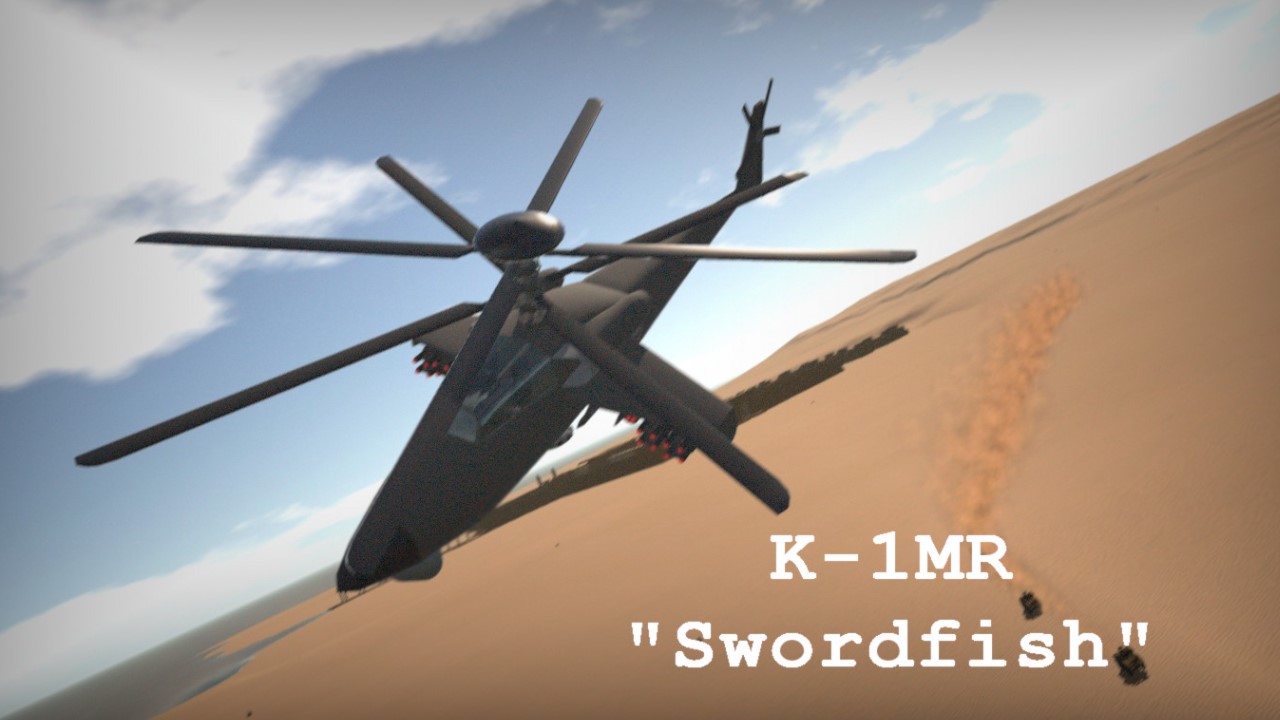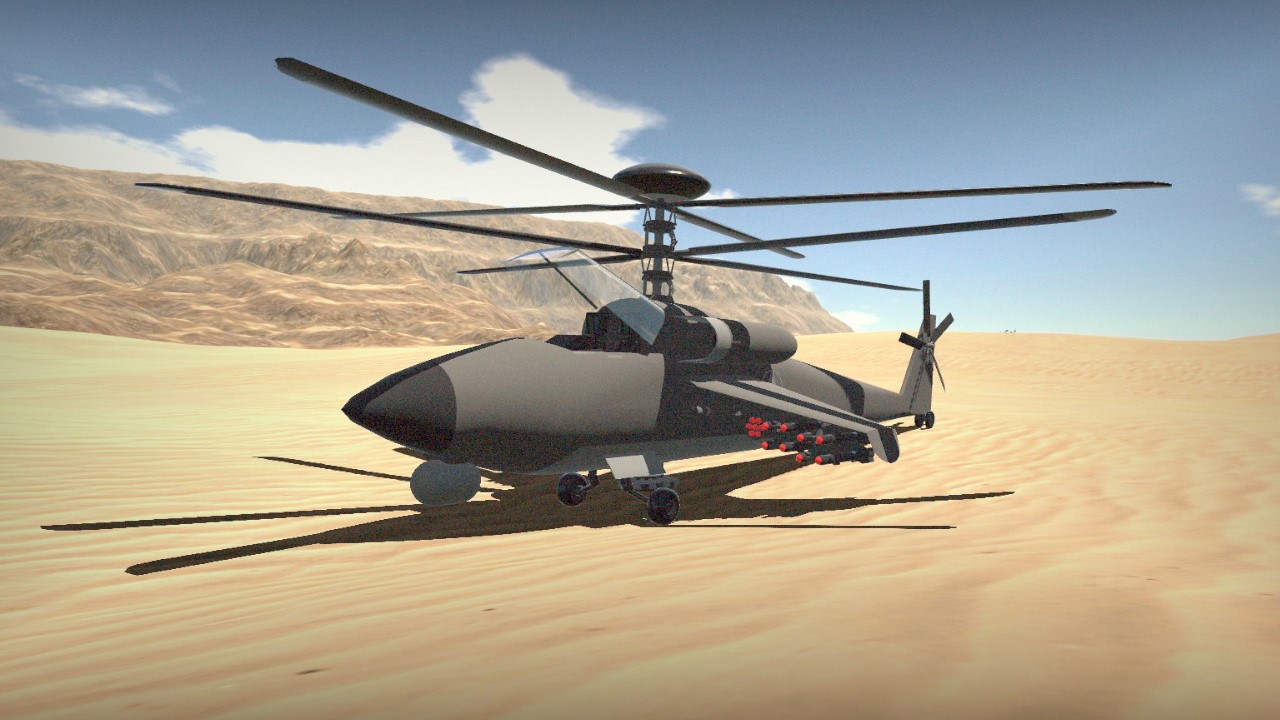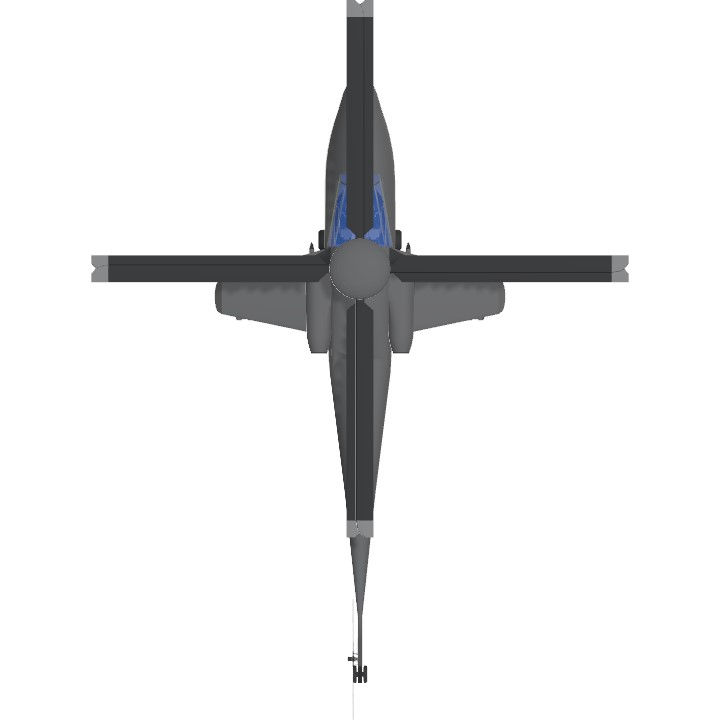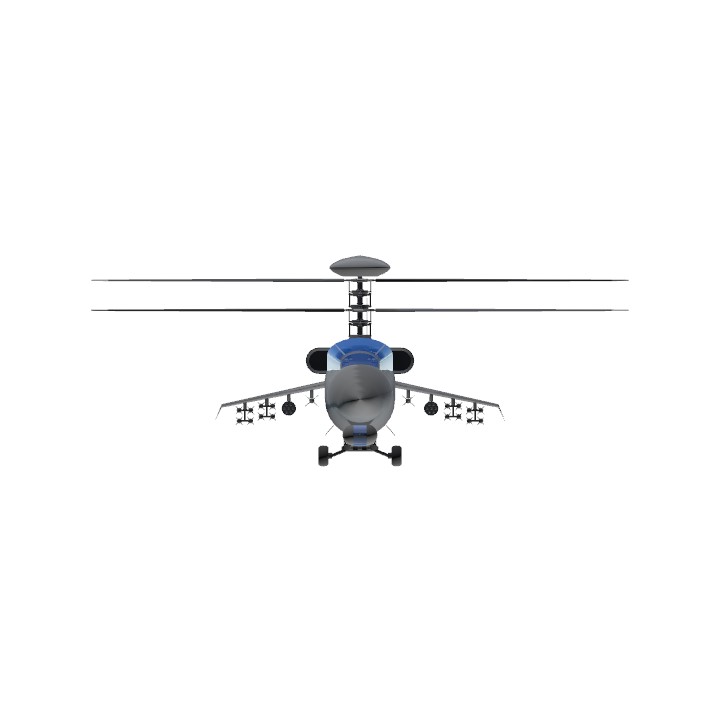Flight instruction:
Unlike fixed wing aircrafts, helicopters are inherently aerodynamically unstable: directly translating to a very lengthy flight instruction. For takeoff, throttle up to 100 percent and wait for a few seconds for the main rotors to spin up to their ideal RPM. Increase the collective pitch using the VTOL slider to around 50%. This is the recommended configuration, and should output more than enough lift for most tasks (hover, cruise, maneuvering). If the collective were to be set any higher, the aircraft has a tendency to pitch up and back, and does not fly very smoothly. As for landing the helicopter, begin by decreasing the horizontal velocity to as close to zero as possible. Once hovering, simply slowly decrease the collective pitch while leaving the throttle as it is, while closely monitoring the descent rate as to avoid a crash. Note that this helicopter does NOT feature a gyroscope.
The onboard tracking camera has an elevation of 60°/-60°, and full 360° horizontal coverage. The accuracy of the track is best when facing the enemy head-on while hovering level to the horizon. The display shows a basic crosshair, TAS in kph, altitude in meters, the vertical velocity in m/s, the selected weapon, the heading of the aircraft on the bottom left, and the angle of slip on the bottom right.
AG2 to open canopy, VTOL slider to toggle collective pitch, Trim slider to lower/raise magnet.
Backstory:
The 70s was an era of extreme optimism for the future in the Avalon Republic, especially for those amongst the ranks of the government. To them, it was evident that helicopters were how the war of tomorrow would have been fought, and development was a matter of national security. A loosely put-together design requirement for a "jack of all trade" multirole helicopter was handed to Avalon Aviation, who to their surprise declined the offer, having their hands too full with the cutting edge AA-2. Instead, former civilian helicopter company "KorTech" took it upon themselves to create the K-1.
Just a year after its deployment in unstable regions of the Republic, it became the bane of tankers and infantry alike, being nicknamed the "Thunder" by insurgents. Its astonishing effectiveness is provided by 16 ATGMs, 14 HEAT rockets and 2 heat seekers, combined with a powerful laser tracking pod, and surprisingly good mobility. Outside of combat the K-1MR also transported howizters and artillery pieces, as well as light armored vehicles. All these attributes had made the K-1 and its numerous variants a timeless masterpiece. Today, being admittedly somewhat obsolete, the K-1 is mostly used as a logistical transport, and occasionally fill the troop transport role when necessary.
Announcements:
Hello people! If you have somehow slugged your way through the absolute essay that is the previous sections and made it here, I thank you greatly for your time! Anyways, this helicopter project has been super fun! I literally could not stop building, which you know, explains why I literally finished it in 3 days when other projects take me weeks. I'm super proud of it, and I hope you'll enjoy flying it just as much as I do. Take care you guys.
Specifications
General Characteristics
- Predecessor heli
- Created On Windows
- Wingspan 50.2ft (15.3m)
- Length 67.2ft (20.5m)
- Height 19.6ft (6.0m)
- Empty Weight 23,607lbs (10,708kg)
- Loaded Weight 24,493lbs (11,110kg)
Performance
- Power/Weight Ratio 13.617
- Wing Loading 1,654.9lbs/ft2 (8,080.1kg/m2)
- Wing Area 14.8ft2 (1.4m2)
- Drag Points 9236
Parts
- Number of Parts 237
- Control Surfaces 1
- Performance Cost 1,529





